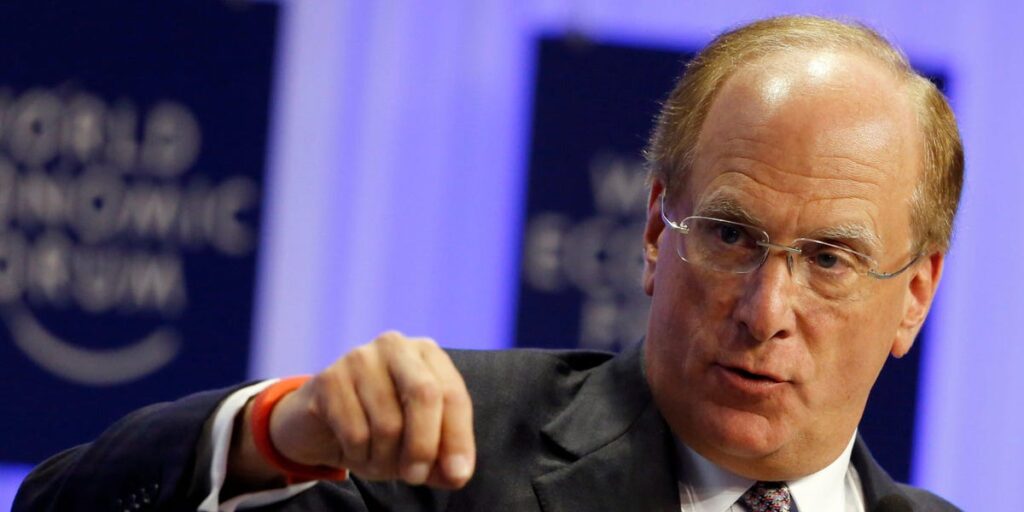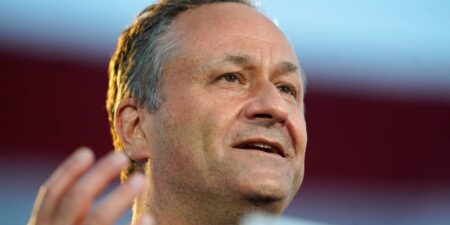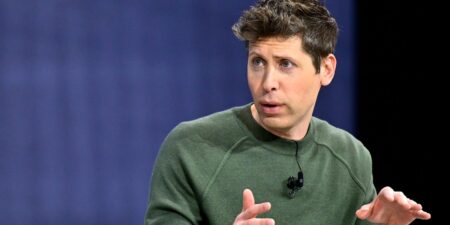BlackRock was founded as a “traditional asset manager,” and it became the largest by disrupting that industry by offering cheap ETFs to the masses.
But, as the firm’s cofounder and CEO, Larry Fink, wrote in his annual letter, “It’s not who we are anymore.”
“We’ve transformed our company,” Fink wrote about the $11.6 trillion juggernaut.
The firm’s private-market ambitions are no secret — BlackRock spent $28 billion last year buying up Global Infrastructure Partners and HPS Investment Partners as well as Preqin, a data provider that focuses on private markets. Fink and fellow executives have spoken at length about their ambitions in the area on earnings calls and more.
Still, it’s rare for any company to pivot away from what has been its bread-and-butter profit engine, much less the industry leader. BlackRock’s business lines in public markets, from its overwhelming iShares ETF line to its fixed-income mutual fund products, manage trillions of dollars, produce billions in revenue each year, and have fundamentally changed the way markets and investors behave.
But Fink wrote that he is eyeing something bigger with BlackRock’s next phase: the “$68 billion investment boom” coming in privately funded infrastructure, the continued explosion of private lending, and eventually, the indexing of private markets.
“In some ways, this moment feels like a bookend to how BlackRock started,” Fink wrote. When the firm was founded 37 years ago, Fink wrote, it changed the asset management industry thanks to its risk management software known as Aladdin. The firm’s ETF business — which manages more than $4 trillion — brought down fees industrywide in both active and passive funds, squeezing asset manager margins in ways they’d never been before.
“Decades from now, we might reflect on 2025 as another pivotal moment, when the financial landscape shifted once again,” he wrote. And it is shifting to the private markets because the 60-40 portfolio that had investors split assets between public equities and bonds will become the 50-30-20 portfolio, with a fifth of capital going “assets like real estate, infrastructure, and private credit,” Fink wrote.
That type of portfolio for the typical individual investor — the ones not in the upper tiers of the tax bracket, but instead saving for retirement with BlackRock index funds — has been unobtainable, Fink wrote, thanks to high minimums and other restrictions on private-market investing.
“The divide between public and private markets is a tough problem — but it’s solvable. In fact, BlackRock has solved market challenges like this before,” Fink wrote, comparing it to the divide between active and passive investing in the public markets.
“We see an opportunity to do for the public-private market divide what we did for index vs. active,” he said.
While Fink’s letter has some political undertones, addressing wealth disparities and how markets and capitalism have exacerbated them, it does not mention ESG investing or diversity, equity, and inclusion initiatives. Fink was a leading voice on both issues prior to the new US administration, but BlackRock has joined others in the corporate world in toning down past statements.
The manager’s latest annual report reframed its DEI section as “connectivity and inclusivity,” Business Insider previously reported.
Fink, who wrote that he started on Wall Street in the 1970s with “long hair, turquoise jewelry, and the world’s ugliest brown suit,” is nonetheless optimistic despite the political turmoil.
He closed his letter stating that the firm “entered 2025 at our strongest inflection point, and I see greater opportunities ahead for BlackRock, our clients, and our shareholders than ever before.”
Read the full article here
















